Remember my last post when I said the worst was over? I was wrong. For weeks I had no thoughts about gardening. None. Everything was frozen. The days were something to be gotten through. Then suddenly, everything changed. Even though the ground is still partially covered, it’s like a dam burst. Ideas are starting to emerge like dirt from the snow. It’s almost March. Time to buy. In fact, last night I looked online at Prairie Nursery, my favorite supplier, and the plant I had my heart set on is sold out. Panic!
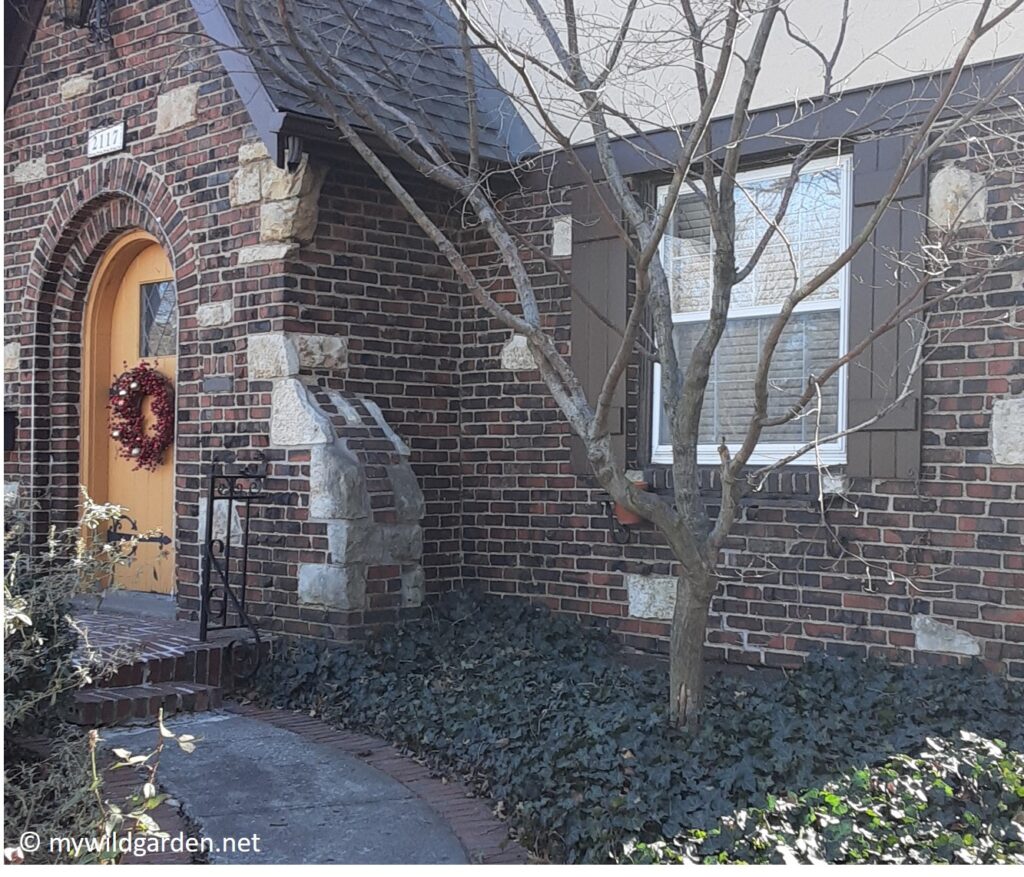
I operate best with a plan, so I hurried to come up with one for this area by our front door. It’s unexpectedly empty after we lost a Japanese maple last year, a dark spot, permanently shaded by the house and neighbor’s trees. The ivy growing there makes it even darker. Although the maple had pretty red leaves, people brushed their heads against it on their way to the front door. My main objection was that it blocked the light coming through the north-facing window. My neighborhood is full of trees planted in front of windows. That’s almost its signature.
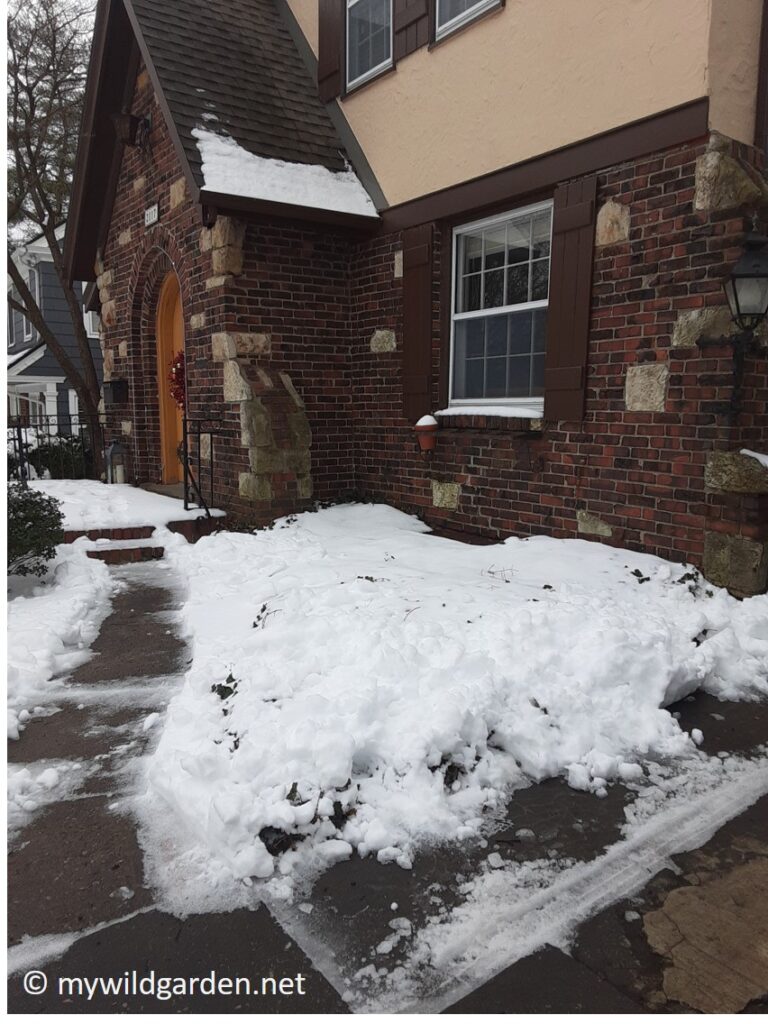
Voilà! It’s gone–presenting new problems and opportunities.
I did some research and sketched a plan on a yellow pad, roughly to scale.
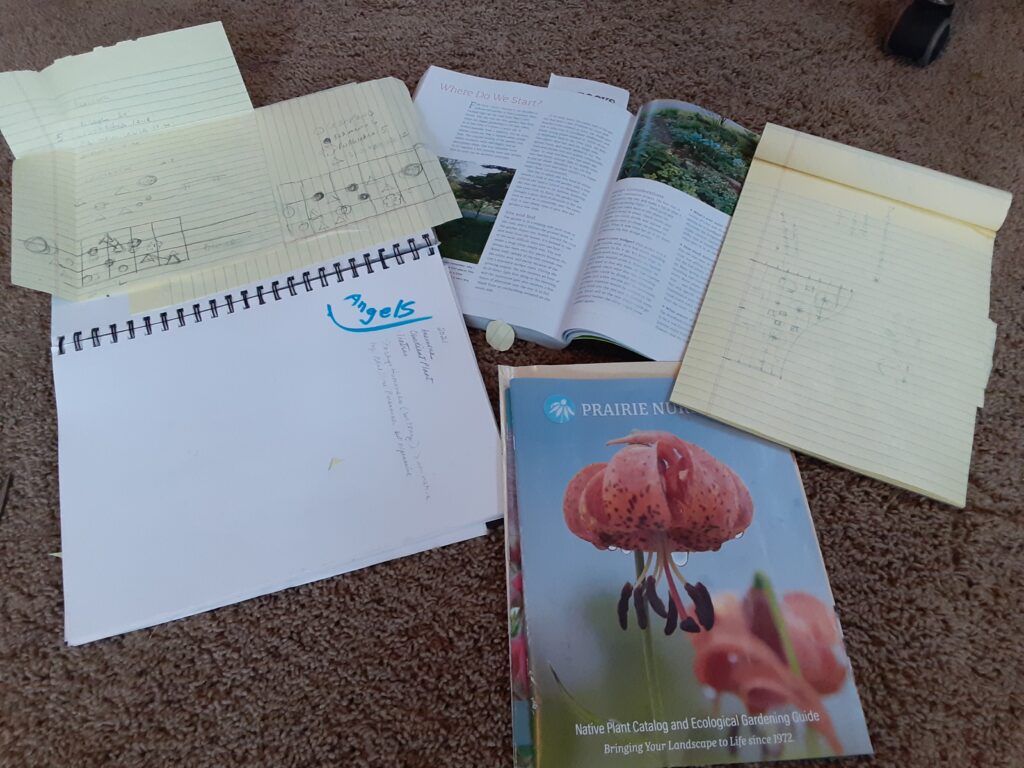
Here’s what I ordered.
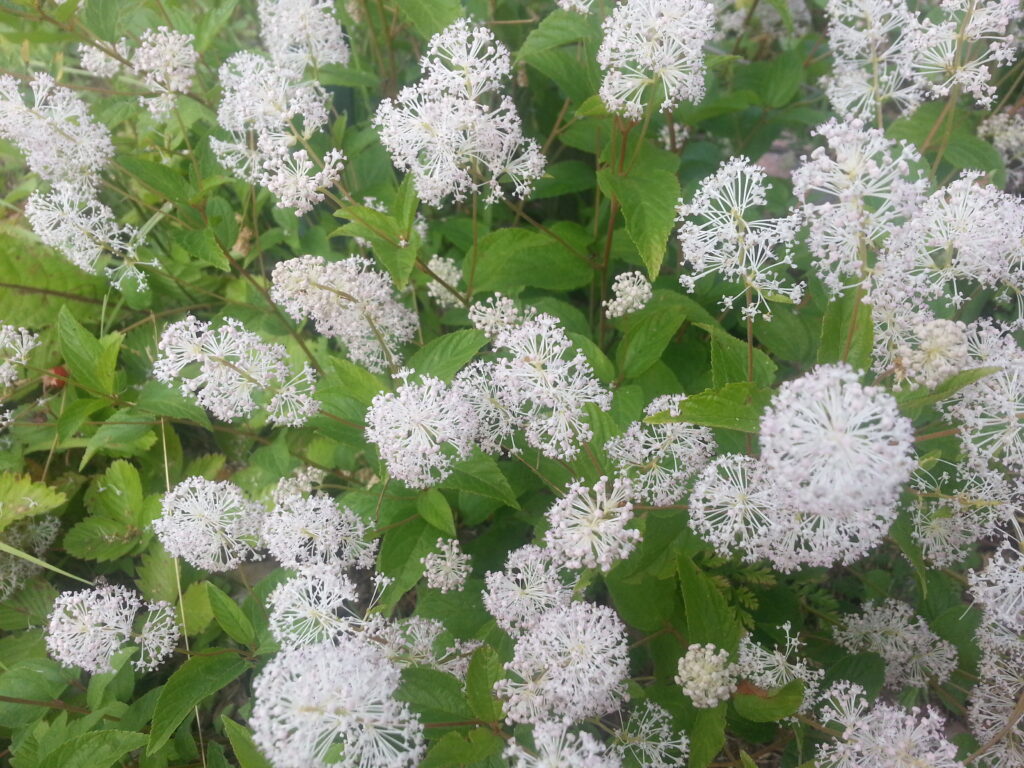
Ceanothus americanus (New Jersey Tea) Blooms in July, August. 2 – 3’ high. The description says “popular with hummingbirds.”
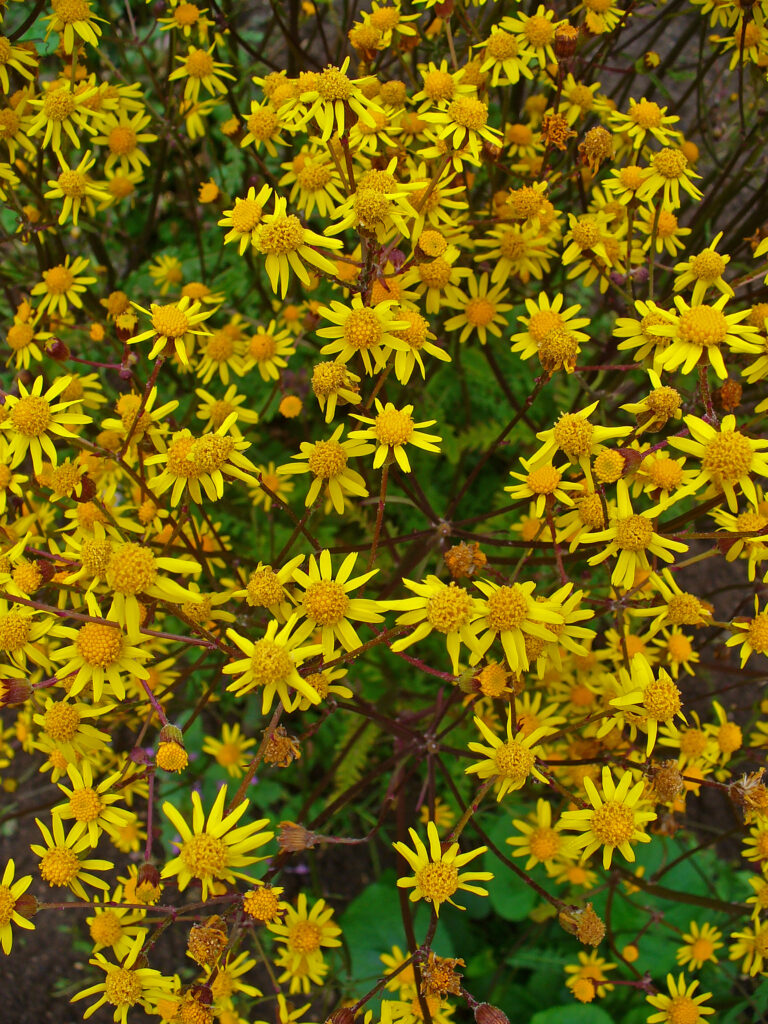
Packera aurea (Golden Groundsel) Blooms May-June. 1 – 2’ high. “The nectar and pollen of the flowers attract small bees such as little carpenter bees, cuckoo bees and various halictid bees.”
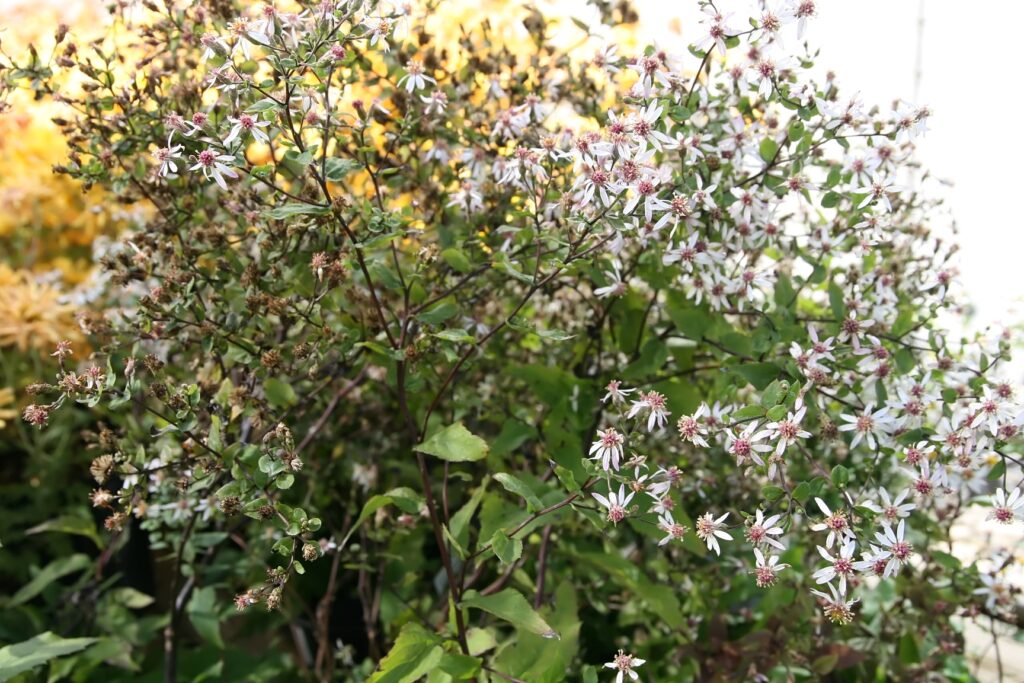
Eurybra divaricata (White Woodland Aster) blooms in August-September. 2-4’ high. “Deep green foliage looks great all season…Asters are particurily beneficial to late season pollinators when so many other flowers have finished blooming. The seeds are consumed by winter songbirds.”
Total cost: $46.93. The plants will be three-inch plugs, so I don’t expect they’ll be too impressive looking at the start. They also don’t arrive until the week of April 13, which gives me time to attack and eliminate the ivy.
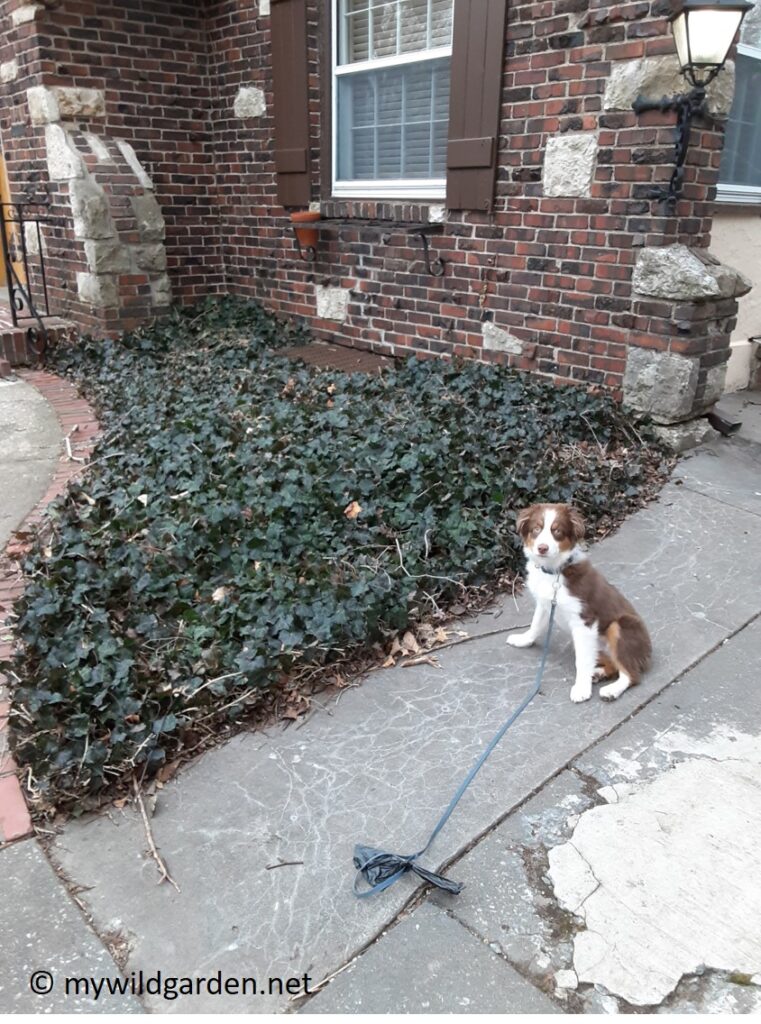
This may be too many plants for this area but we have another shady spot in back where they may work if they don’t fit.
I decided a red twig dogwood would disappear against the similarly colored bricks. They also grow to be six to nine feet tall, so I will keep thinking about that for another location.
I’m really excited about this plan–and I’m proud of myself for taking a risk, because I’m not familiar with any of these plants. (It’s not too big a risk.) I learned about them from my Know Maintenance Perennial Garden book and the Dyck Arboretum blog. Speaking of the Dyck Arboretum, I signed up for this week’s session of their Native Plant School on Wednesday, February 24, 2021, about sustainably sourcing flowers.
I’m going to do my best to enjoy these last days of winter, because I have a feeling things are going to speed up very soon.
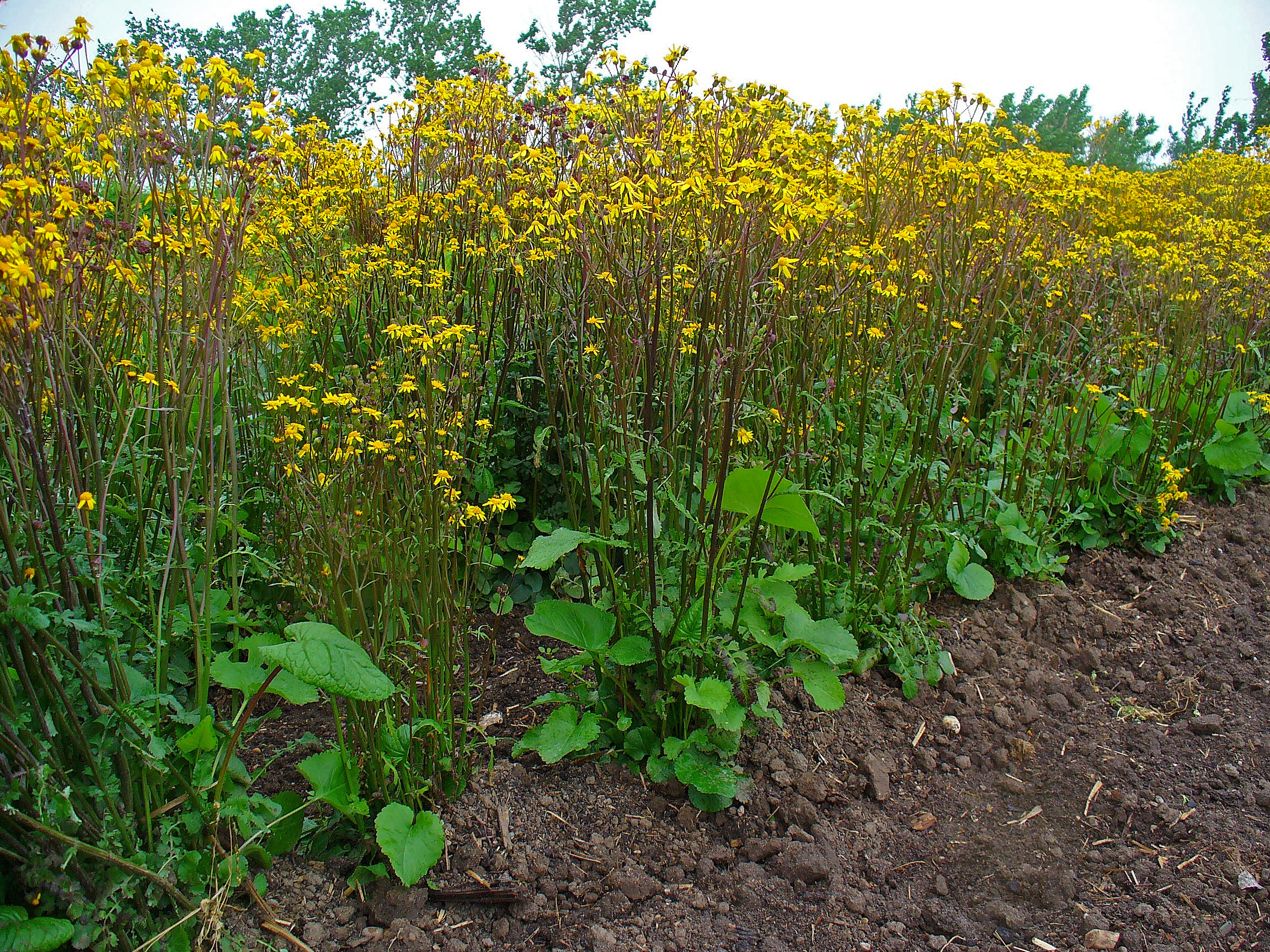
i love this blog !
Thanks, Sirenna!